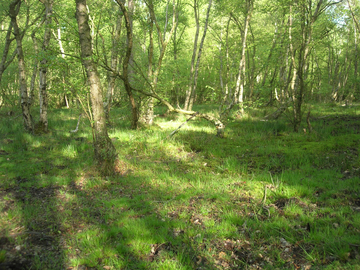Sutton Park LiDAR, air photographic and ground surveys and palaeoenvironmental assessment
Mike Hodder, 2010. https://doi.org/10.5284/1000155. How to cite using this DOI
Data copyright © Birmingham City Council, Warwickshire County Council, University of Birmingham, Unit for Landscape Modelling unless otherwise stated
This work is licensed under the ADS Terms of Use and Access.
Primary contact
Dr
Mike
Hodder
Birmingham City Council
Alpha Tower, PO Box 28
Queensway, Suffolk Street
Birmingham
B1 1TU
England
Resource identifiers
- ADS Collection: 981
- DOI:https://doi.org/10.5284/1000155
- How to cite using this DOI
Overview

The aerial photographic data consists of mono images processed to produce a seamless ortho mosaic. The LiDAR data has been processed to dtm and dsm with vegetation removed using an algorithm developed in similar surveys. Additional processing has provided Principle Component Analysis from a multi directional hill shaded data set.
The ground survey followed initial interpretation of the LiDAR data, in particular to identify features that were not already recorded in the Birmingham SMR. It contains a description, including dimensions, interpretation, relationships, associations and condition, and a photograph, of all of the features that could be located on the ground at the time of the survey. It also includes an attempt to identify areas where earthworks survive or are likely to survive but have not been detected by LiDAR (e.g. in brushland/heathland) and identifies areas for future detailed survey or other archaeological work.
The palaeoenvironmental assessment includes analysis of the landscape and potential sedimentary traps identified from terrain evaluation, and a search of geological, soil and historic maps; terrain evaluation to consider hydrological conditions and soil chemistry and their potential impact on the long-term preservation of environmental remains; analysis of previous archaeological excavations, where palaeoenvironmental remains may have been identified and recorded; and analysis of previous environmental archaeological investigations. Areas likely to contain deposits of palaeoenvironmental interest were mapped and a walkover survey of these areas comprised inspection of the ground surface, any natural cutbank exposures and augering where no natural banks were available. A sampling strategy for future work is included.









